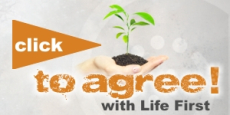The Circle of Law and the Council Wheel (ancient structures that thrived amongst many of the indigenous cultures of the Americas) are wisdom gathering and decision making bodies that enable individuals and groups to relate with, source and direct power. But we’re not talking about dilithium crystals here (sorry, you need to be a Star Trek fan for that!) or the pyramidal, hierarchical power structures prevalent in our modern societies – the structures that place personal agenda and profit first. We’re talking about true democratic power that is structured in circular form – a natural and sustainable way in which power can flow.
Everything the Power of the World does is done in a circle. The sky is round, and I have heard that the earth is round like a ball, and so are all the stars. The wind, in its greatest power, whirls... Even the seasons form a great circle in their changing, and always come back again to where they were... and so it is in everything where power moves. – Black Elk. Oglala Sioux.
Because of the symmetry that the circle holds, there is no imbalance of power. It’s a form that is naturally inclusive, evoking a sense of equality and respect from participants. Instead of fragmenting the voices and dissipating the structure’s power, which often happens in the judgemental environment of hierarchical models, this actually calls forward all the voices. It ensures that all perspectives have been heard and that no vital fragments of wisdom are lost. Employing a circular model of wisdom gathering and decision making not only empowers the wider community, but also the individual – for the benefit of the whole.
According to Wikipedia…
The word “democracy” (Greek: δημοκρατία) combines the elements dêmos (δῆμος, which means “people”) and krátos (κράτος, which means “force” or “power”).
In other words, Democracy = People Power!
So, do we currently live in a democratic society where the voice of the individual is truly heard and valued? How many laws have been passed, in your life time, where you have felt an integral part of the process? Laws that may have had consequences affecting your way of life, the environment you live in and even your children’s future.
I mentioned earlier that the Circle of Law and the Council Wheel were ancient structures, but this certainly doesn’t mean that they are in any way irrelevant. Au contraire, they are more relevant to the human race now, in this time of great change and challenge than maybe ever before in our history. They demonstrate a knowledge of the human psyche that is mirrored, in part, by the latest cutting edge psychological sciences and hold insights into the natural world that have even impressed quantum physicists!
This isn’t just new-age theory either – these structures have been tried and tested for generations…
...In particular the Iroquois Confederacy, a grouping of six of the tribal nations in the North East of America and Canada, used the Council as the basis for its governance. It's use was so successful that "the American constitution was based on the spiritual inspiration that Thomas Jefferson and his group gained from the Iroquois government. They drew out of it what they thought was a democratic tendency. – Courtesy of mutualinspiration.co.uk http://mutualinspiration.co.uk/WisdomCouncil/Wisdom%20Council%20History.html
Because the Council works so well with the group dynamic it’s therefore only natural that we can also apply these tools to the business model. And they have been – to businesses ranging from small organisations to large multinational corporations. See the following magazine article excerpt…
Next time you're in a meeting, watch the rituals of business: the duelling egos, turf protection, talking-without-listening. Maybe it's time for a different kind of ritual. Something old... ...Eight hours later, when the council was over, Helena Light Hadley left with a new insight into decision making. "The tribal approach makes a lot of sense," she says. "When a decision is put in the context of `the greater good,' you stop acting so territorial. You see the needs of the entire system, not just the little piece you're hanging on to." – Fast Company Magazine, 'How to make decisions like a tribe'http://www.fastcompany.com/magazine/01/rainbow.html
One of the main objectives of the Children’s Fire Movement is to re-establish these democratic structures in our local communities, businesses and organisations. Not for ‘power over the other’, but for the empowerment of all – for our future generations and the continuation of life.
If this is the first page you have visited you can click here to get a quick overview of the movement.














